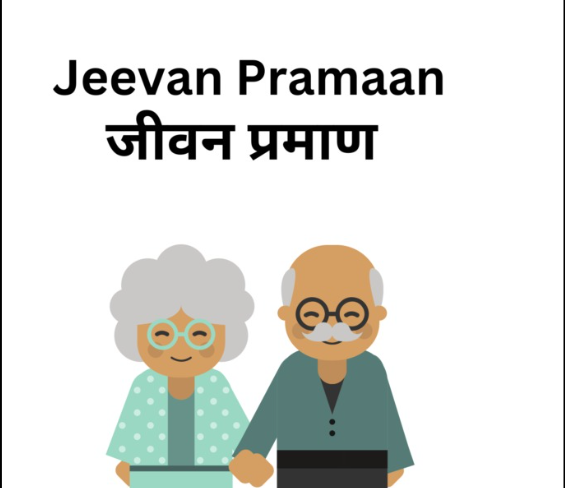In recent years, efforts to transform India into a digitally empowered society have gained substantial momentum, driven by the government’s Digital India initiative. Among various e-governance initiatives, Jeevan Pramaan has emerged as a key program aimed at digitizing the process of submitting the life certificate for pensioners. This article delves into the intricacies of Jeevan Pramaan, its impact on simplifying pension procedures, and its relationship with schemes like the Atal Pension Yojana.
Understanding Jeevan Pramaan
Jeevan Pramaan, or Digital Life Certificate for Pensioners, is an initiative launched by the Indian government on 10th November 2014. This innovative platform assists pensioners in submitting their life certificates online, thereby eliminating the need for physical presence to authenticate their continued existence for the disbursal of pensions.
The traditional process required pensioners to appear in person at pension disbursing agencies or engage in lengthy paperwork, which often posed a significant inconvenience, especially for aged and ailing pensioners. Jeevan Pramaan introduces an Aadhar-based biometric authentication system, which allows pensioners to generate and submit their life certificates digitally from the comfort of their homes or any other location with internet access.
Mechanics of Jeevan Pramaan
Pensioners must first register for a Jeevan Pramaan account by downloading the mobile application or visiting Jeevan Pramaan Centers available widely across India. They need an Aadhar number and a valid mobile number for registration. Once registered, the pensioner must authenticate their digital identity through a biometric device linked with the system. The data thus captured is transmitted to the SaaS (Software as a Service) server, which generates the Digital Life Certificate (DLC). This certificate is then instantly accessible to the pensioner’s pension disbursing agency without any manual intervention.
Financial Efficiency through Jeevan Pramaan
Jeevan Pramaan not only conserves time and effort for pensioners but also brings substantial fiscal benefits to government agencies by reducing administrative overheads. The ease of digital submission reduces documentation errors, thereby speeding up the process of pension clearance and disbursement. For an initiative that covers over a million pensioners nationwide, this translates into significant savings in bureaucratic procedures.
For example, if the administrative cost for physical certificate processing is ₹50 per certificate, and Jeevan Pramaan reduces this cost by 30%, this means a savings of ₹15 per certificate. For an estimated 1 crore beneficiaries, this reveals potential annual savings of ₹15 crores for the government.
The Impact on Schemes Like Atal Pension Yojana
The introduction of Jeevan Pramaan has ripple effects on pension schemes across the board, including the Atal Pension Yojana (APY). Launched as a government-backed voluntary pension scheme targeted at the unorganized sector, APY aims to provide a fixed pension ranging from ₹1,000 to ₹5,000 per month, upon reaching the age of 60. It serves as a crucial safety net for individuals who are not part of any formal pension scheme.
While Jeevan Pramaan is not directly associated with Atal Pension Yojana, its digital framework sets a precedent for further simplifying processes across different pension schemes. The success of Jeevan Pramaan in streamlining document submission could inspire similar technological integrations within APY, enhancing its administrative efficiency.
Potential Challenges and Considerations
Despite its transformational role, Jeevan Pramaan faces challenges such as limited internet access in rural areas and the need for pensioners to be digitally literate to fully benefit from the service. Additionally, concerns about data privacy and system reliability necessitate robust cybersecurity measures to protect sensitive personal information.
Jeevan Pramaan is a strategic step towards a comprehensive digital pension management ecosystem in India. However, its successful implementation relies heavily on strengthening digital infrastructure and widespread awareness campaigns. Furthermore, while Jeevan Pramaan presents massive potential for administrative efficiency and cost savings, the government must ensure inclusivity to avoid marginalizing pensioners unfamiliar with digital tools.
Conclusion
Jeevan Pramaan revolutionizes the way pensioners engage with the pension disbursal process by offering a secure, hassle-free, and efficient alternative to traditional methods. By cutting down unnecessary administrative barriers, it allows pensioners to enjoy their hard-earned benefits with dignity. While its integration with systems like Atal Pension Yojana is still in the formative stages, Jeevan Pramaan paves the way for a future where digital efficiency is at the heart of public service delivery.
Disclaimer: While Jeevan Pramaan simplifies pension procedures significantly, investors and stakeholders must evaluate the comprehensive implications of engaging in India’s financial markets. Understanding the pros and cons and seeking professional advice is crucial before making financial decisions.
Summary: Jeevan Pramaan & Its Role in Simplifying Pension Procedures
Jeevan Pramaan, introduced by the Indian government, represents a significant shift in how pensioners submit life certificates, transitioning from physical submissions to digital authenticity using Aadhaar-enabled biometric systems. This article details the procedural convenience brought by Jeevan Pramaan, which abolishes the need for pensioners to be physically present for certificate submission, thus saving time and administrative costs. Additionally, integrating digital solutions like Jeevan Pramaan has the potential to influence other pension schemes, such as Atal Pension Yojana, enhancing their operational efficiency and outreach. While it suggests a promising future for digitalized pension management, ensuring inclusive access and robust data security remains critical. The initiative exemplifies the broader potential of Digital India in transforming public services for better efficiency and inclusivity, with cost-saving implications for both government bodies and beneficiaries. However, for comprehensive financial planning, individuals must carefully weigh all market aspects with expert guidance.




